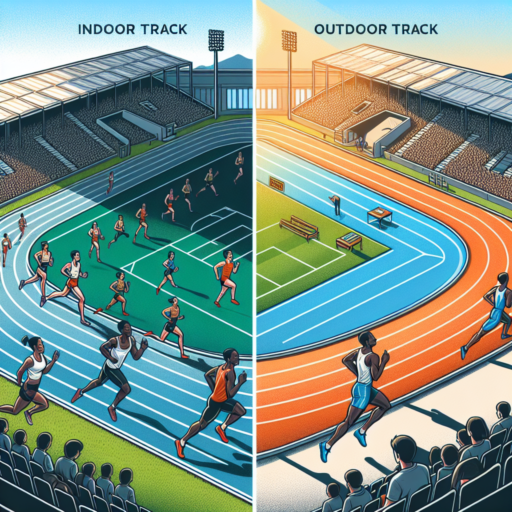What is a running strides workout?
A running strides workout is a series of controlled, high-intensity runs interspersed with periods of rest or low activity. Each stride is a short, powerful burst of speed that typically ranges from 50 to 200 meters in distance. The primary aim is to improve a runner’s speed, form, and efficiency. Unlike traditional long-distance running or sprinting, strides focus on accelerating to maximum speed in a short period, maintaining that speed, and then smoothly decelerating.
During a running strides workout, runners concentrate on their form, aiming to run with quick, light steps. This type of training teaches the body to become more comfortable and efficient at higher speeds. It’s an excellent way for runners to work on their acceleration and speed without the same level of fatigue or risk of injury that more extended, intense sessions might present. Furthermore, these workouts can be easily incorporated into a runner’s routine, often positioned at the end of an easy run or as part of a more comprehensive training session.
The structure of a running strides workout typically includes a warm-up period, the strides themselves, and a cooldown. To perform a stride, a runner begins at a jog, accelerates to near maximum speed, then gradually slows to a stop. This process is repeated several times, with walking or light jogging intervals in between to recover. The focus on high-quality, efficient movement at a fast pace is what sets strides apart from other types of speed work.
No se han encontrado productos.
How many strides should I run?
Deciding on the optimal number of strides to run can greatly impact your running performance and injury prevention. Factors such as your fitness level, specific goals, and current training phase should guide your decision. A commonly recommended range is between 6 to 12 strides for most runners, especially those incorporating strides into their regular training regimen for the first time.
Strides, or short accelerations, typically last about 20 to 30 seconds each and are performed at a controlled, fast effort. Integrating strides into your routine 2 to 3 times a week can help enhance your form, efficiency, and speed. It’s advisable to focus on quality over quantity; each stride should feel like a strong, swift run, but not a full sprint. Ensuring you are fully recovered between each stride is essential to gain the benefits without overtaxing your body.
Beginners might start with fewer strides, focusing on technique and gradually increasing the number as strength and endurance improve. On the other hand, more experienced runners may opt for closer to the upper end of the recommended range, pushing their limits while still maintaining form. Tailoring the number of strides to your current training and recovery status will help maximize benefits and mitigate the risk of injury.
What is stride style running?
Stride style running refers to a running technique that emphasizes the optimization of each step’s length and efficiency during a running activity. Unlike traditional running methods that focus on speed or endurance, stride style running prioritizes the manner in which a runner’s foot strikes the ground, the posture maintained throughout the run, and the overall rhythm developed. This method aims to enhance performance by reducing the effort per stride, improving energy conservation, and minimizing the risk of injury.
At its core, stride style running involves a keen focus on the runner’s biomechanics. It begins with the understanding that each runner has a unique stride pattern that can be optimized through practice and correct techniques. This optimization process involves adjustments to the footstrike, whether it be heel, midfoot, or forefoot striking, as well as fine-tuning the stride length to match the runner’s physical capabilities and the running conditions. The goal is to find a harmonious balance that allows for smooth, effective, and efficiently propelling strides.
Implementing stride style running requires a conscious effort in several areas, including strengthening core muscles, improving flexibility, and developing a better sense of body awareness during runs. Runners are encouraged to pay attention to their running form, aiming for a posture that promotes a forward lean and ensures that their feet land directly under the body. Through consistent practice and possibly under the guidance of a running coach or using video analysis tools, runners can refine their stride style to achieve more fluid and less injury-prone running experiences.
Is it better to run with bigger strides?
When discussing the efficiency of running techniques, the question of whether it’s better to run with bigger strides often surfaces among athletes and enthusiasts alike. A larger stride length can imply covering more ground with fewer steps, potentially leading to faster running times. However, this approach is not without its nuances and considerations, particularly in relation to an individual’s biomechanics and running goals.
Impact on the Body: The mechanics of running with bigger strides inherently places different demands on the body’s musculoskeletal system. While it might seem that larger strides could enhance performance, they also increase the force exerted on the joints, particularly the knees and hips. For runners, especially those focusing on long distances, consistently employing larger strides can elevate the risk of injury over time due to the repetitive stress on these critical joints.
Efficiency and Energy Expenditure: Another aspect to consider is the energy cost associated with varying stride lengths. Running with bigger strides requires more muscular force and energy per step, which can lead to quicker fatigue, affecting overall running efficiency. By contrast, shorter, more frequent strides have been found to improve running economy for many athletes, enabling them to maintain pace for longer periods without expending excessive energy.




